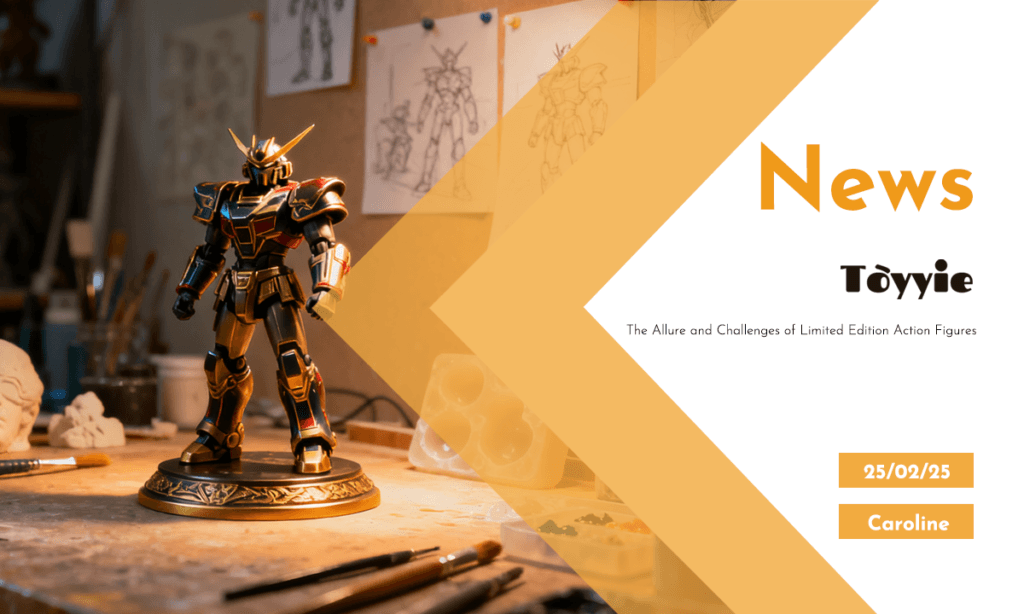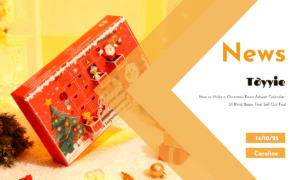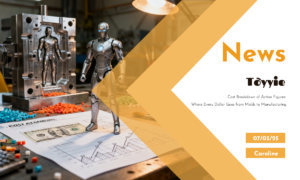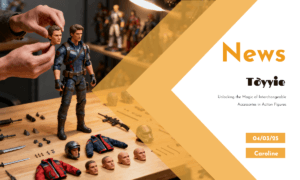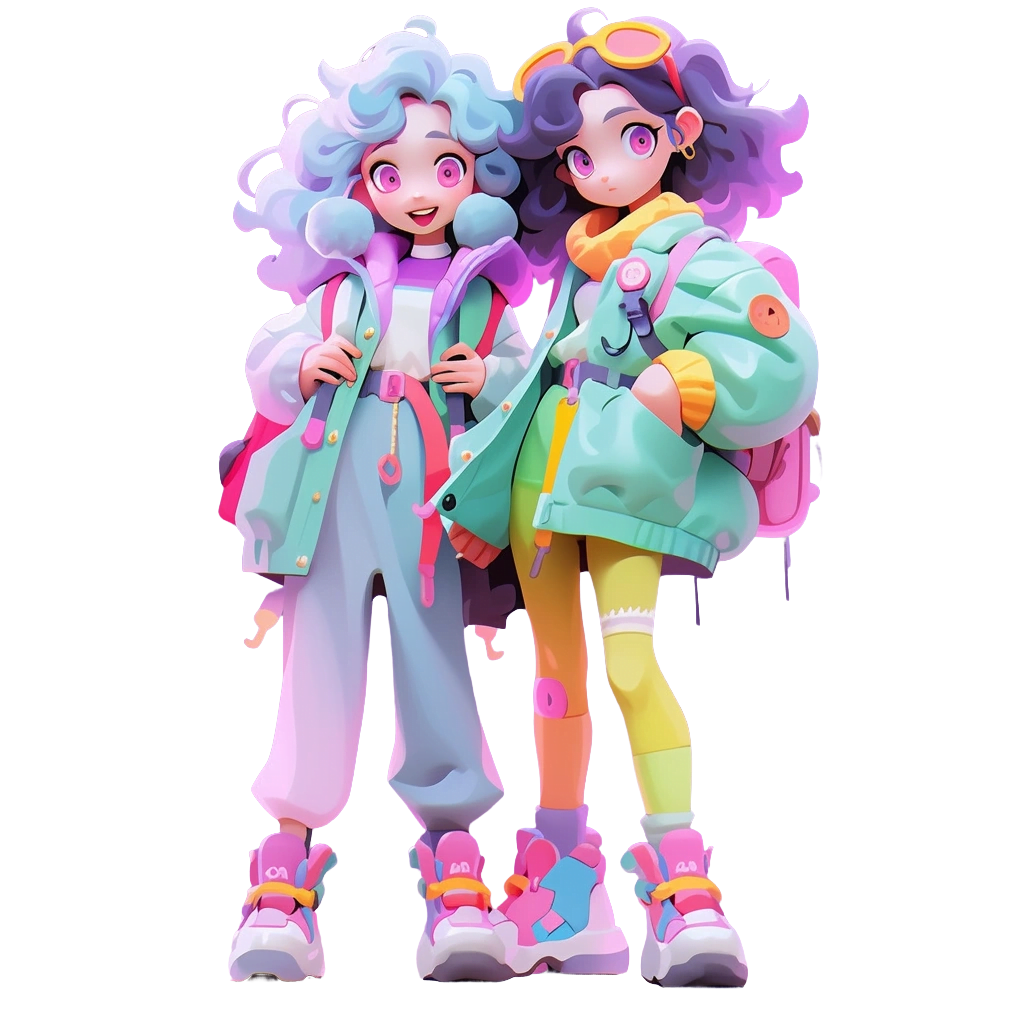📌 Introduction📌
In the vibrant world of collectible toys, limited edition action figures hold a special place. These aren’t just toys; they are masterpieces that capture the essence of artistry, exclusivity, and passion. As someone who has spent years in the toy manufacturing industry, I’ve seen firsthand how these figures can ignite excitement and anticipation among collectors and enthusiasts alike. Each limited edition piece is crafted with meticulous attention to detail, often featuring unique designs or rare materials that set them apart from mass-produced items.
However, the path to creating these coveted collectibles is fraught with challenges, especially when it comes to balancing cost and quality. In my experience, one of the biggest hurdles we face in producing limited edition action figures is managing production costs without compromising on the quality that collectors expect. This delicate balance requires not only a deep understanding of manufacturing processes but also a strategic approach to sourcing materials and labor.
Moreover, maintaining high-quality standards in small batch productions adds another layer of complexity. Unlike mass production, where economies of scale can help reduce costs, limited editions demand precision and consistency in every unit produced. This means investing in skilled craftsmanship and advanced manufacturing technologies, which can be costly. Yet, the stakes are high—any compromise on quality can tarnish a brand’s reputation and alienate loyal customers.
From my perspective, the challenge lies in finding innovative solutions that allow us to produce these exclusive items efficiently while upholding the premium quality that defines them. It’s a task that requires creativity, foresight, and a willingness to embrace new methods and technologies. Over the years, I’ve learned that success in this niche market isn’t just about making toys—it’s about crafting experiences that resonate with collectors and stand the test of time.
🧮 Understanding the Cost Dynamics in Limited Production
When diving into the realm of limited edition action figures, understanding the cost dynamics becomes crucial for any manufacturer aiming to thrive. From my extensive experience in the toy manufacturing sector, I have observed that several key factors predominantly influence the production costs of these exclusive collectibles. Let’s break down these elements and explore their impact on our budgeting and pricing strategies.
1️⃣ Material Costs
Firstly, material costs form a significant portion of the expenses. High-quality materials are non-negotiable when producing limited edition action figures. Whether it’s the type of plastic used for durability, the paint for vibrant colors, or even the packaging material, each choice affects the final product’s appeal and longevity. For instance, opting for eco-friendly or rare materials might increase costs but also enhance the product’s value proposition, appealing to environmentally conscious consumers.
2️⃣ Labor Costs
Labor costs are another critical factor. Crafting detailed and intricate designs demands skilled artisans and technicians. In limited runs, the labor cost per unit is higher compared to mass production due to the lack of economies of scale. However, investing in skilled labor ensures that each figure meets the high standards expected by collectors. This investment not only maintains quality but also supports local craftsmanship, adding an ethical dimension to our production process.
3️⃣ Overheads
Overheads such as machinery maintenance, facility costs, and utilities also contribute significantly to the overall expense. Advanced machinery required for precision work in limited editions needs regular upkeep, which can be costly. Moreover, the specialized equipment used for small batches might not be utilized to its full potential, leading to higher amortized costs per unit.
These cost factors directly influence our pricing strategy. We must ensure that the price reflects the quality and exclusivity of the product while remaining competitive. Pricing too high could deter potential buyers, whereas pricing too low might undervalue the craftsmanship and materials involved. Therefore, a balanced approach is essential. By understanding these dynamics, we can strategically position our products in the market, ensuring they are accessible to our target audience without compromising on profitability.
In conclusion, managing costs in limited edition production is a complex but manageable challenge. By meticulously analyzing each cost component and aligning it with our business goals, we can craft a pricing strategy that respects both our financial constraints and our commitment to quality. This strategic approach not only sustains our operations but also enhances our brand’s reputation in the competitive world of collectible toys.
🛂 Navigating Quality Control Challenges in Small Batch Production
As we delve deeper into the intricacies of producing limited edition action figures, one cannot overlook the paramount importance of quality control. In my years steering through the ebbs and flows of the toy manufacturing industry, I’ve realized that maintaining impeccable quality is not just a goal—it’s a necessity, especially when dealing with small batch productions. Here, the margin for error is minuscule, and the impact of defects can be disproportionately large, affecting not just the product line but potentially the entire brand’s reputation.
1️⃣ Multi-Level Inspections
Quality control in limited edition production presents unique challenges. Unlike mass production, where automated systems and standardized processes can manage quality at scale, small batches require a more hands-on approach. Each piece needs individual attention to ensure it meets the stringent standards expected by discerning collectors. This personalized scrutiny is both a boon and a bane. While it allows for meticulous craftsmanship, it also increases the risk of human error and inconsistency, which can lead to defective units slipping through.
2️⃣ Skilled Workforce
From my personal experience, I recall a particular incident involving a limited series of superhero action figures. Despite rigorous checks, a minor defect in the paint application went unnoticed until the product reached the shelves. The backlash was immediate and severe, with collectors demanding refunds and expressing disappointment online. This incident underscored the critical need for robust quality assurance protocols, even—or perhaps especially—in small batch scenarios.
3️⃣ Technology Integration
To mitigate such risks, implementing comprehensive quality control measures is indispensable. One effective strategy is the integration of multi-level inspections throughout the production process. Starting from raw material checks to in-process inspections and final audits before packaging, each step should be designed to catch defects early. This layered approach not only helps in identifying issues at their nascent stage but also instills a culture of quality consciousness among the production team.
Another pivotal aspect is the training and empowerment of the workforce. Skilled artisans and technicians should be regularly trained on the latest quality standards and techniques. Empowering them with the knowledge and tools to perform self-inspections can significantly enhance the overall quality output. Moreover, fostering an environment where feedback is encouraged and acted upon can lead to continuous improvements in the production process.
Technology also plays a crucial role in modern quality control. Utilizing advanced imaging and scanning technologies can help in detecting minute defects that are invisible to the naked eye. These technologies, although an upfront investment, pay dividends by reducing defect rates and enhancing product reliability.
In conclusion, while the path to impeccable quality in small batch production is laden with challenges, it is navigable with the right strategies and commitment. By embedding quality control deeply into the production ethos and leveraging technology and skilled manpower, manufacturers can ensure that each limited edition action figure not only meets but exceeds the expectations of collectors worldwide. This dedication to quality not only safeguards the brand’s reputation but also cements its status as a purveyor of premium collectibles.
💡 Strategies for Effective Cost Management in Limited Edition Production
Navigating the financial landscape of limited edition action figure production requires a blend of strategic planning and innovative thinking. Through my journey in the toy manufacturing industry, I’ve discovered that effective cost management doesn’t merely involve cutting corners but rather optimizing resources to maximize value. Here, I will share some practical strategies that have proven beneficial in managing costs without sacrificing the integrity of our cherished collectibles.
1️⃣ Supplier Negotiation
One of the first steps in cost-effective production is supplier negotiation. Building strong relationships with suppliers can lead to better pricing and terms, which are crucial when operating on smaller scales. I remember negotiating with a plastics supplier who initially offered terms that were less favorable. By discussing our long-term needs and potential growth, we managed to secure a deal that reduced costs significantly while ensuring a steady supply of high-quality materials. This not only helped in controlling material costs but also in stabilizing our production schedule.
2️⃣ Efficient Scheduling
Efficient production scheduling is another cornerstone of cost management. By carefully planning the production timeline, we can minimize downtime and make optimal use of labor and machinery. In one instance, by reorganizing our production schedule to run concurrently with other projects, we were able to share overhead costs, thereby reducing the per-unit cost of our limited edition figures. This strategic alignment of schedules allowed us to maintain a lean operation without compromising on the exclusivity or quality of our products.
3️⃣ Flexible Manufacturing
Moreover, adopting flexible manufacturing practices can greatly aid in managing costs. Flexibility in production allows us to adapt quickly to changes in demand or design without incurring excessive costs. For example, using modular assembly lines enables us to switch between different models with minimal setup time and cost. This flexibility proved invaluable when we had to make last-minute adjustments to a character’s outfit design based on feedback from early samples. The ability to swiftly implement changes kept our project on track and within budget.
4️⃣ Employee Training
Investing in employee training and development is also a cost-effective strategy that pays dividends in the long run. Well-trained employees are more efficient and make fewer mistakes, which reduces waste and rework. We implemented a continuous learning program that focused on the latest manufacturing techniques and quality control measures. The initial investment in training translated into enhanced productivity and a marked improvement in the quality of our output.
5️⃣ Technology Adoption
Lastly, embracing technology can streamline operations and cut costs. Automation in certain repetitive tasks not only speeds up the production process but also reduces labor costs and errors. We introduced robotic arms for precise painting tasks, which not only improved the consistency of the finish but also freed up skilled workers for more complex tasks. This technological upgrade was a game-changer in maintaining our competitive edge in the market.
In summary, managing costs in limited edition action figure production involves a multifaceted approach that includes strategic supplier negotiations, efficient scheduling, flexible manufacturing, employee training, and technological adoption. Each of these strategies contributes to a robust framework that supports sustainable production practices. By implementing these tactics, we can ensure that our limited edition figures remain financially viable while continuing to captivate the hearts of collectors around the globe.
🏗️ Ensuring High-Quality Production in Limited Runs
In the realm of limited edition action figures, achieving high-quality production in small batches is not just a challenge—it’s an art form. Over the years, I’ve gathered insights and developed strategies that not only meet but exceed the expectations of discerning collectors. Today, I want to share some of these best practices that have been instrumental in maintaining the premium quality synonymous with our brand.
1️⃣ Precision Tooling
Firstly, precision tooling stands as a cornerstone in our production process. Investing in high-quality molds and tools is non-negotiable. These tools are the foundation upon which all our action figures are built, and their precision directly impacts the final product’s quality. I recall a project where slight imperfections in the mold led to inconsistencies in the figure’s armor texture. By upgrading to a CNC machined mold, we achieved a level of detail that was previously unattainable, significantly enhancing the visual appeal and collector satisfaction.
2️⃣ Skilled Craftsmanship
Skilled craftsmanship is another vital element in our arsenal. Our team comprises artisans who bring years of experience and a keen eye for detail to every project. Their expertise is particularly crucial in hand-painting and assembling parts that machines cannot replicate with the same finesse. For instance, during the production of a limited series featuring intricate facial expressions, our craftsmen spent extra hours perfecting each stroke to ensure that every figure conveyed the intended emotion. This dedication to craftsmanship not only elevates the aesthetic value but also reinforces the exclusivity of each piece.
3️⃣ Advanced Quality Assurance
Advanced quality assurance techniques further fortify our commitment to excellence. We employ a multi-tiered inspection process that scrutinizes every aspect of the production, from raw materials to the finished product. One innovative technique we adopted is the use of 3D scanning technology, which allows us to detect even the minutest discrepancies in shape and size. This technology proved invaluable when a subtle imbalance in a figure’s stance was detected, which could have gone unnoticed otherwise. Correcting these issues early in the production cycle prevents costly recalls and preserves our brand’s integrity.
4️⃣ Continuous Improvement
Moreover, fostering a culture of continuous improvement within our production teams has been pivotal. Regular training sessions and workshops keep our team updated with the latest industry standards and techniques. Encouraging feedback loops where team members can suggest improvements has led to numerous enhancements in our production processes. This proactive approach not only boosts morale but also drives innovation, ensuring that our production methods evolve alongside technological advancements.
Incorporating these best practices into our production workflow has enabled us to consistently deliver high-quality limited edition action figures. Precision tooling, skilled craftsmanship, and advanced quality assurance are not just strategies—they are commitments to excellence that resonate with every collector who cherishes our creations. By adhering to these principles, we not only uphold our brand’s reputation but also continue to inspire joy and admiration among our loyal clientele.
⚖️ Balancing Act: Cost vs. Quality in Limited Edition Toy Production
Throughout my career in the toy manufacturing industry, I’ve come to realize that the true art of producing limited edition action figures lies in the delicate balance between cost management and quality assurance. Reflecting on the insights shared earlier—from navigating cost dynamics and implementing robust quality control measures to employing strategic cost management and ensuring high-quality production—I am reminded of the profound interplay between these elements. Each decision made in the production process reverberates through the lifecycle of the product, influencing everything from initial consumer reception to long-term brand loyalty.
Cost management and quality assurance are not isolated challenges but intertwined facets that dictate the success of limited edition toys. Efficient cost management does not mean cutting corners; rather, it involves smart allocation of resources, strategic negotiations with suppliers, and optimized production schedules. These practices ensure that financial constraints do not impede the pursuit of excellence in toy manufacturing. On the flip side, stringent quality assurance protocols safeguard the brand’s reputation, ensuring that each piece not only meets but exceeds the expectations of discerning collectors.
The real magic happens when cost management and quality assurance converge to support each other. For instance, investing in high-quality materials and skilled labor might seem costly upfront, but it pays off by reducing defect rates and enhancing product durability. This not only minimizes returns and complaints but also elevates customer satisfaction, which is priceless in the competitive world of collectibles. Similarly, adopting advanced technologies like 3D scanning for quality checks might require an initial capital outlay, yet it streamlines the production process and enhances precision, ultimately saving costs in the long run.
Moreover, the strategies discussed are not mere theoretical constructs but practical tools that have proven effective in real-world scenarios. They empower manufacturers to navigate the complexities of limited edition production with confidence. By integrating these strategies, companies can achieve a harmonious balance where cost-efficiency fuels quality production, and high-quality output justifies the investment, creating a virtuous cycle of success.
In conclusion, the journey of producing limited edition action figures is fraught with challenges, but it is also ripe with opportunities for those willing to innovate and adapt. By embracing a holistic approach that marries cost management with quality assurance, manufacturers can not only survive but thrive in this niche market. As we continue to push the boundaries of what’s possible in toy manufacturing, let us carry forward these lessons, ensuring that each limited edition piece we create is not just a product, but a testament to our commitment to excellence and passion for the art of toy making.

